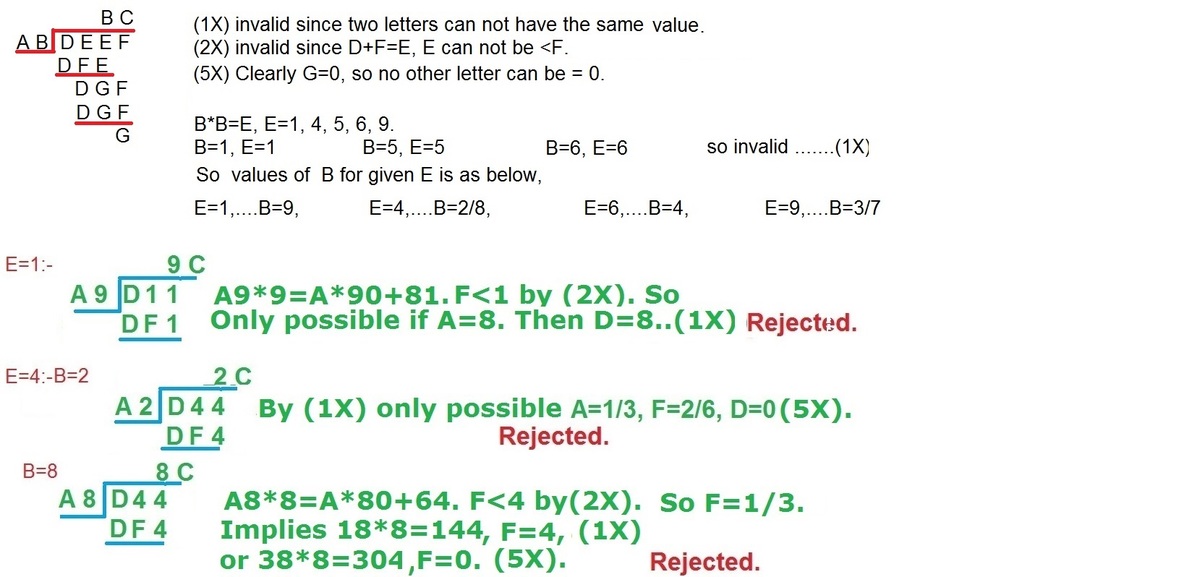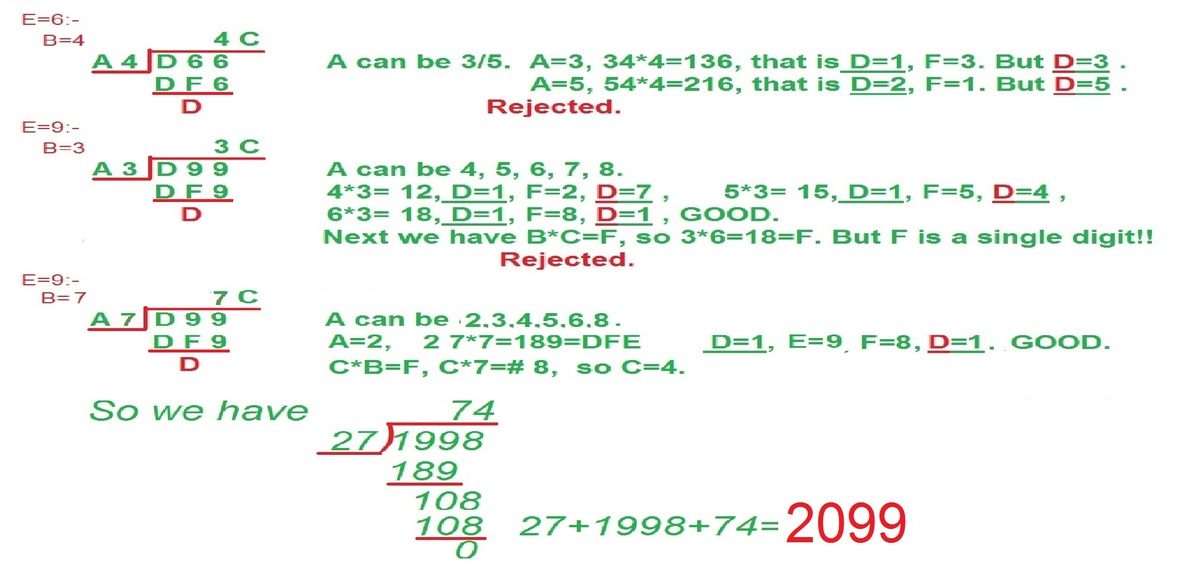Amazing Cryptogram #1
Two same characters indicate the same number, and two different characters indicate different numbers. Every character is an integer between 0~9, while the first digits of all numbers should not be equal to 0.
Find the sum of the dividend, divisor and quotient.
Source: This is an epitaph, made by a Japanese puzzlist Tamiya Katsuya, which is dedicated to his dead friend.
This problem is a part of <Cryptarithms> series .
The answer is 2099.
This section requires Javascript.
You are seeing this because something didn't load right. We suggest you, (a) try
refreshing the page, (b) enabling javascript if it is disabled on your browser and,
finally, (c)
loading the
non-javascript version of this page
. We're sorry about the hassle.


We will rewrite the given equation into a multiplication statement to make things easier. Let 眞 = A , 如 = B , 實 = C , 生 = D , 滅 = E , 已 = F , and 空 = G . From the given problem, we can immediately find that G = 0 . (Interestingly, 空 in Chinese means "empty," so the value makes a lot of sense.) Now, we can rewrite the problem to say
D D × D F E A B 0 E E B C F F
Notice that B × B ends in a digit E = B . This means B = 1 , 5 , 6 . By the same logic, C = 1 . Also, since F > 0 , D F E > D 0 F , implying that B > C . Finally, by looking at the first and second columns of the addition, we deduce that F < E , since otherwise we would be forced to carry over to the thousands place, and that is not allowed.
All that is left to do is test various combinations of B and C to find the one that satisfy these conditions and ensures that each letter is given a distinct value. After extensive testing, we find that the only combination that works is ( B , C ) = ( 7 , 4 ) , yielding the solution ( A , B , C , D , E , F , G ) = ( 2 , 7 , 4 , 1 , 9 , 8 , 0 ) . Thus, the sum of the dividend, divisor, and quotient is equal to D E E F + A B + B C = 1 9 9 8 + 2 7 + 7 4 = 2 0 9 9 .
The completed cryptarithm is
1 1 × 1 8 9 2 7 0 9 9 7 4 8 8